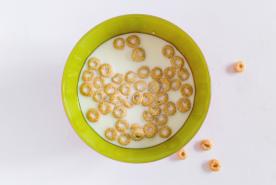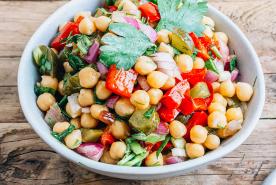Last Updated: January 02, 2023
Medically reviewed by NKF Patient Education Team
Leafy greens are edible plant leaves that we eat as a vegetable. Leafy greens are also called leaf vegetables, salad greens, vegetable greens, or simply greens. One cup of raw greens can range from 5-60 calories with 1-4 grams of fiber.
Why are leafy greens a superfood?
- They are packed with many vitamins, minerals, and antioxidants
- Leafy greens are naturally low in calories and high in fiber
- They are available throughout the year in grocery stores and local farmers markets, or you can easily grow them in your garden during the spring and summer months depending on your location
- There are many varieties and flavors that you can use in many ways, such as in salads, soups, stir fry, etc.
Leafy greens and kidney disease
Leafy greens are rich in potassium, which you may need to watch with kidney disease. The amount of potassium you can have each day will depend on your stage of kidney disease or the type of dialysis you receive.
Chronic Kidney Disease (CKD)/Transplant
Most people with CKD do not have to limit leafy greens because of potassium. If your laboratory results show higher levels of potassium, your doctor or kidney dietitian may talk with you about how much to eat. People with kidney transplants should wash greens thoroughly.
Hemodialysis (3 times/week)
Potassium can be a concern for some leafy greens. How you cook your leafy greens can make a difference in the amount of potassium and other nutrients. For example, raw spinach can cook down to a much smaller amount, so 1 cup raw has less potassium than 1 cup cooked.
Daily Home and Nocturnal Hemodialysis/Peritoneal Dialysis
These types of dialysis can remove more potassium, so you may need to eat more potassium rich foods. Leafy green vegetables are a good way to add extra potassium to your diet and decrease the need to take an additional potassium pill.
Kidney Stones
If you are a calcium oxalate stone former, talk with your doctor or kidney dietitian about the need to limit oxalates. Spinach and Swiss chard are high in oxalates.
Potassium levels in common leafy greens
Kale (raw)
Lettuce (raw)
Napa Cabbage (cooked)
Mustard Greens (boiled)
Red Cabbage (raw)
Spinach (raw)
Beet Greens (boiled)
Spinach (boiled, canned, frozen)
Swiss Chard (boiled)
Turnip Greens (boiled)
Want to save this information for later?
Download the National Kidney Foundation’s Fact Sheet: Kidney-Friendly Superfoods: Leafy Greens
*This content is provided for informational use only and is not intended as medical advice or as a substitute for the medical advice of a healthcare professional.

















